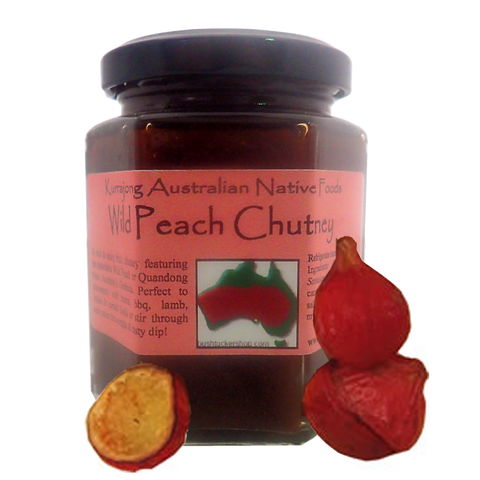
Quandongs

 |
Natural HistoryThe Desert Quandong Santalum acuminatum grows in the arid regions of Australia's Outback and is closely related to aromatic sandalwood. The Quandong is one of the worlds richest sources of vitamin C, with each fruit containing around 6 times the vitamin C of an orange! Our Quandong fruit are grown on a sustainable arid land plantation in South Australia on the Eyre Penninsula, the yellow dot on the map to the left shows where this is, the red area is the natural range of the Quandong. The Quandong is a small tree with distinctive dark green foliage and leaves that hang vertically. They are a semi-parasitic tree which means they attach their roots to the roots of other plants drawing additional nutrients from them and often killing the host over the long term. |

|
Cultural HistoryQuandong trees are highly sought after in the Outback where they provide some tasty respite for the weary traveler and trees are often found with a log 'ladder' leaning up against their trunk, left by the last people who raided the Quandong for its fruit. Quandong fruit were and still are a very important and highly sought after food for Aboriginal Australians, nothing brings a gleam to the eye more than the mere mention of the desert Quandong and most outback Australians have some wonderful childhood memories of collecting the fruit to make pies or cakes and jewelry and games of the stones. In the days gone by, the attractive seeds were used for Chinese Checkers, fine jewelry and there are various stories about games of skill and luck played out with the seed of the desert Quandong many of which have been transferred cross culturally by Aboriginal children. Left: Our Quandongs being harvested from the Shoalmarra Quandong Farm at Tumby Bay in South Australia (yellow dot on the map above). |



